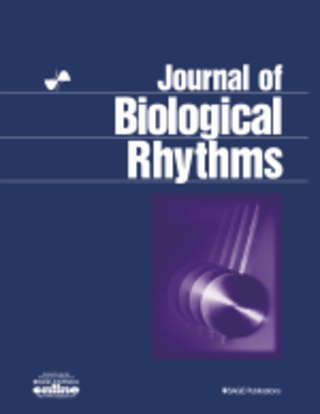
Sir Frederick McCoy, was an Irish palaeontologist, zoologist, and museum administrator, active in Australia. He is noted for founding the Botanic Garden of the University of Melbourne in 1856.

The Royal Society of Victoria (RSV) is the oldest scientific society in Victoria, Australia.

Biology Letters is a peer-reviewed, biological, scientific journal published by the Royal Society. It focuses on the rapid publication of short high quality research articles, reviews and opinion pieces across the biological sciences. Biology Letters has an average turnaround time of twenty four days from submission to a first decision.

Archibald James Campbell was an Australian civil servant in the Victorian government Customs Service. However, his international reputation rests on his expertise as an amateur ornithologist, naturalist, and photographer.
The Field Naturalists Club of Victoria (FNCV) is an Australian natural history and conservation organisation, the oldest of its kind in Australia.

Leslie Gordon Chandler (1888–1980) was an Australian jeweller, vigneron, bird photographer, writer and speaker on natural history, and ornithologist. He became a member of the Royal Australasian Ornithologists Union (RAOU) in 1911 and was Press Correspondent for the RAOU 1914-1916 and again in 1920, war service and disability intervening. From 1920 he was based at Red Cliffs in the Victorian Mallee region. He was instrumental in the establishment of the Hattah-Kulkyne National Park there.
Bruce Alexander Fuhrer OAM was an Australian botanist and photographer, specialising in cryptogams. His photographic collection of fungi numbers more than 3000 species.

The Belfast Naturalists' Field Club is a club of naturalists based in Belfast, Northern Ireland. Founded in 1863, the club was an important part of the education system for Victorian naturalists and worked largely through first-hand field studies. It has been credited with playing an important role in the elucidation of glacial and post-glacial sea levels, climates and fossil beaches and issuing the first of the regional handbooks for meetings of the British Association for the Advancement of Science as far back as 1874. The club has four sections, Archeology & History, Botany, Geology and Zoology, and has published several books and a periodical. The Herbarium of the BNFC is now in the Ulster Museum.
The Western Australian Naturalist, is the peer-reviewed scientific journal of the Western Australian Naturalists' Club. It publishes original research on topics related to the natural history of Western Australia.

The Society for Scientific Exploration (SSE) is a group committed to studying fringe science. The opinions of the organization in regard to what are the proper limits of scientific exploration are often at odds with those of mainstream science. Critics argue that the SSE is devoted to disreputable ideas far outside the scientific mainstream.
Gary Presland is an Australian archaeologist and writer who studied history at La Trobe University 1973-76, and archaeology at the University of London, 1977-79. He was a staff member of the Victoria Archaeological Survey from 1983 to April 1988; his research interests are in the Aboriginal and natural history of Melbourne. One important contribution was the transcription and editing of the unpublished journals of George Augustus Robinson, Chief Protector of Aborigines in the Port Phillip District, 1839-1849. He was awarded the degree of Doctor of Philosophy at the University of Melbourne in 2005, for his reconstruction of the pre-European natural history of Melbourne.

The Journal of Biological Rhythms is a bimonthly peer-reviewed scientific journal that covers chronobiology or any rhythms, especially biological rhythms with a special emphasis on seasonal and circadian rhythms. The journal publishes primary reports, reviews, commentaries, or letters. The Journal of Biological Rhythms has been in publication since 1986 and is currently published by SAGE Publications. The journal is the official publication of the Society for Research on Biological Rhythms. The editor-in-chief is William J. Schwartz.
Alexander Clifford "Cliff" Beauglehole was an Australian farmer, botanist, plant collector and naturalist.
Norman Houghton is a historian and archivist in Geelong, Victoria, who has published more than 40 books, many focusing on timber tramways and sawmills of the Otway and Wombat Forests of Western Victoria, Australia. Most of his works have been self-published, while he has provided numerous articles to the newsletter and journal of the Light Railway Research Society of Australia.
Lake Flannigan is a natural freshwater lake on King Island, Tasmania, Australia, situated four kilometres south of the Cape Wickham Lighthouse, in the northern locality of Wickham.
The Journal of Biosocial Science is a bimonthly peer-reviewed scientific journal covering the intersection of biology and sociology. It was the continuation of The Eugenics Review, published by the Galton Institute from 1909 till 1968. It obtained its current name in 1969, with volume numbering re-starting at 1, and switched publishers to Cambridge University Press. The editor-in-chief is Dr Alejandra Núñez-de la Mora.
The Queensland Naturalists' Club Inc. was founded in Queensland as the Queensland Field Naturalists Club in 1906 to encourage the study, appreciation and preservation of Queensland’s flora and fauna and its environments. It has been known as the Queensland Naturalists Club from 1922. The Queensland Gould League of Bird Lovers joined the club in 1922. It organises field trips and excursions.
The Latrobe Valley Field Naturalists Club is an Australian regional scientific natural history and conservation society. It is based in the Latrobe Valley in Victoria and draws members from across western, central and southern Gippsland.
The Field Naturalists' Club of Ballarat (FNCB) is an Australian regional scientific natural history and conservation society. The club is located in Ballarat, Victoria, on the lands of the Wadawurrung people.
The Peninsula Field Naturalists' Club is an Australian regional scientific natural history and conservation society. The club is located on the Mornington Peninsula, Victoria on the traditional lands of the Mayone-bulluk and Boonwurrung-Balluk people, of the Boonwurrung nation.








